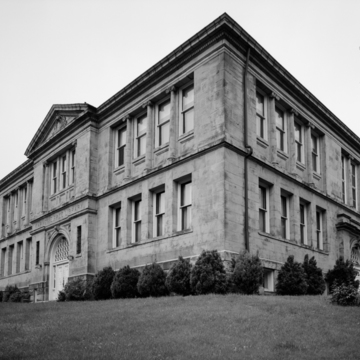Connellsville's Carnegie Library is one of the more than 1,600 Carnegie-endowed libraries in the United States. Although it was built before Carnegie's design review requirement, it nonetheless has the restrained classical qualities so admired by his New York foundation. The square-shaped building is faced with Ohio buff stone and has a pediment above the central entrance on the west facade. Windows throughout are double sash and separated on the second story by columned pilasters. While only two stories on a raised basement in height, the building seems taller due to
You are here
Carnegie Free Library
1903, J. M. McCollum. 299 S. Pittsburgh St.
If SAH Archipedia has been useful to you, please consider supporting it.
SAH Archipedia tells the story of the United States through its buildings, landscapes, and cities. This freely available resource empowers the public with authoritative knowledge that deepens their understanding and appreciation of the built environment. But the Society of Architectural Historians, which created SAH Archipedia with University of Virginia Press, needs your support to maintain the high-caliber research, writing, photography, cartography, editing, design, and programming that make SAH Archipedia a trusted online resource available to all who value the history of place, heritage tourism, and learning.





















